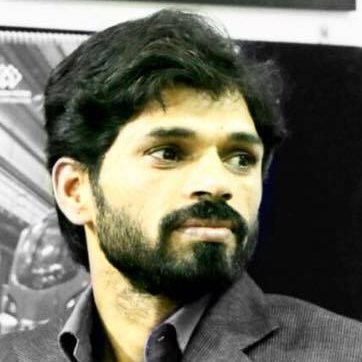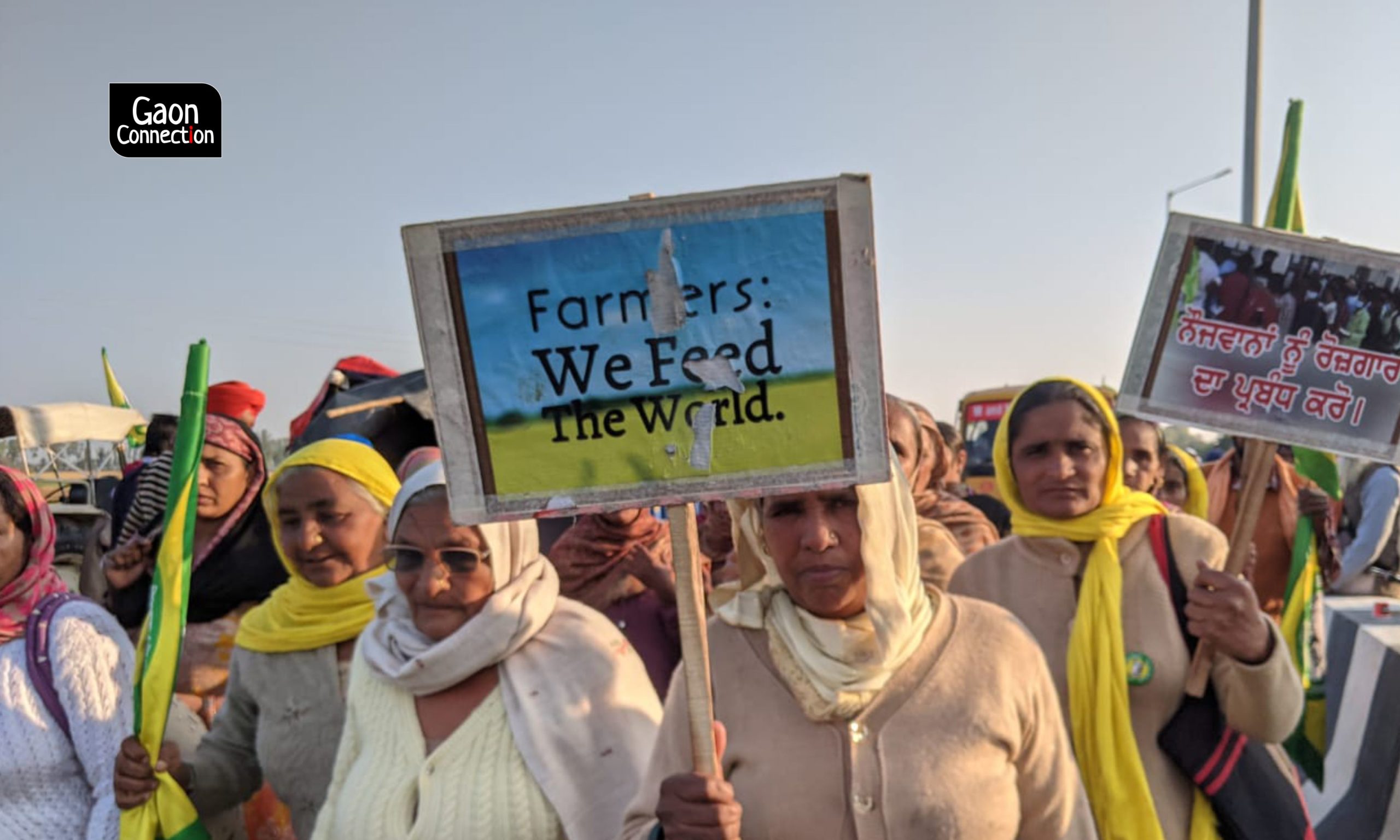Farmers Protest: Gaon Connection spent three days with the protesting farmers, as they marched from Punjab and Haryana towards Delhi
Camping out in the open, breaking through police barriers, facing tear gas and water cannons...thousands of farmers from Punjab and Haryana have made it to Delhi. A ground report of the three days from Arvind Shukla and Daya Sagar.

Shambhu Border/Singhu border.
It was all quiet at the Shambhu border between Haryana and Punjab. Tents and tractor trolleys of farmers loomed in the darkness at 4 am on the morning of November 26. There was a blanket of silence. In one corner stood a banner with the images of Bhagat Singh, Baba Saheb Ambedkar and Shaheed Udham Singh. The Shambhu border has been the site of farmers’ protest for two months.
A few farmers sat around in groups talking quietly. The Gaon Connection team joined them to find out more about the agitation. “How can we accept that instead of following the recommendation of the Swaminathan report, we were served the three agricultural laws,” Ram Singh, who farms on 40 acres of land in Punjab, asked Gaon Connection. “These laws are a conspiracy to ruin our mandis. Look what happened in Bihar when they did away with the mandis. We will not allow the same to happen in Punjab,” he said.
Ram Singh and his companions were not convinced by Prime Minister Narendra Singh Modi’s assurances that neither the mandi nor the minimum support price (MSP) systems will come to any harm. “If there is darkness ahead and you are told there is no danger, will you still walk into it? Terrible darkness will befall the farmers with these laws,” Ram Singh warned.
Farmers from Punjab and Haryana have been the most vocal in their protests against the three recent agricultural laws. They pointed out that the laws had several loopholes and said the central government had let them down time and again, be it during the 1984 riots, while diverting water from Punjab to Haryana, Punjab’s drug problem or the blocking of rail services.
The peace and quiet shattered at 9.30 am, on November 27, when the thousands of farmers camped there, surged ahead on their way to the national capital Delhi. The Haryana Police blocked a part of the highway on the Punjab side with barricades. Soon, the tractor trolleys and trucks coming from Punjab began queuing up. Despite heavy police cover and the paramilitary forces deployed by the Haryana government, farmers pushed aside the barricades and moved on.

There were farmers’ trolleys and tractors as far as one could see on the Patiala-Ambala highway. They bore farmers from several remote districts, including Kartarpur, bordering Pakistan. Many of the farmers had already travelled nearly 300 kilometres to reach Patiala. The tractors were filled with provisions, diesel, generators and firewood. It was obvious the farmers had come prepared to stay away from home for several months.
At Khanauri, another border point between Punjab and Haryana, that connects Sangrur and Jind districts, more than 5,000 tractor-trolleys had gathered. Here too, the Haryana police had placed boulders and dumped truckloads of soil on the road.
“Punjab and Haryana have the highest procurement at MSP as our mandis are strong. We sold paddy this time for one thousand eight hundred and sixty eight rupees a quintal, when farmers in Bihar and UP got just about a thousand rupees,” Gurdaspur resident Raminder Singh of Jamhuri Kisan Sabha, told Gaon Connection. “People from Bihar come to Punjab to sell paddy. So, we do not want the existing system to end,” he added.
Many farmers also feared that the agri laws had thrown open doors to corporates. “If private companies enter agriculture, farmers will not be able to compete with them. The land belonging to the farmers will sooner or later be occupied by them. Everything in the country is, as it is, going into private hands,” rued Ranjit Singh, a farmer from Kalanaur, Haryana about 250 kms from the state capital, Chandigarh.
“Modiji is the prime minister of the country and we are its farmers,” Happy Singh, a farmer from Kalanaur of Dera Baba Nanak, told Gaon Connection. “We are going to talk to him. Do we not even have the right to talk? We are unarmed and empty-handed, what is there to fear us,” he asked.
Gurunam Singh Barnala, offered tea and biscuits to the arriving protestors. He told Gaon Connection that the prime minister had “awakened the sleeping farmer of Punjab by introducing the agricultural laws”.
At the Khanauri border, several toll booths were being used to serve langar. Hordes of farmers from Sangrur, Mansa and Patiala, led by the Bhartiya Kisan Union from Ugrahan, gathered on the Haryana side. The protestors ranged from eight-year-old children to 80-year-old men and women.

“We are land-owners and we live to cultivate, we do not want laws promising us profits,” said 70-year-old farmer, Surjeet Kaur.
Two kilometres short of the Khanauri border, tractor trolleys lined up on both sides of the road. “So far about 5,000 trolleys have arrived here, and more are expected,” a Punjab police constable stationed there told Gaon Connection.
With help from local farmers, the Gaon Connection team managed to reach Karnal at night crossing by foot through several fields. That very evening at Karnal, the farmers had been forcibly stopped by the administration. But, despite that, they crossed over into Panipat where the police had dug up the road. But the farmers filled up the trenches and proceeded to Sonipat, where again they faced huge boulders outside the Rajiv Gandhi Education Campus. Here, the protestors were hosed down with water cannons. Many farmers accused the authorities of snatching away the keys to their vehicles.
The Gaon Connection team reached the Singhu border, between Haryana and Delhi, at around noon. On November 27 at around 2 pm, pitched battles broke out between protestors who breached the first round of barriers and the police who lathi-charged, tear-gassed and used water cannons on them. Things calmed down when farmer leaders, including Yogendra Yadav of Samyukt Kisan Morcha, Sardar VM Singh, the convener of the All India Kisan Coordination Struggle Committee, and Gurnam Singh Chadhuni, of Kisan Union, Chadhuni, arrived.
The protestors were informed by the police that they could proceed to Delhi, and protest peacefully at the Nirankari Maidan in Burari, north Delhi. However, the farmers who were at the Singhu border refused to proceed and chose to continue to camp at the Singhu border, where they still are.

